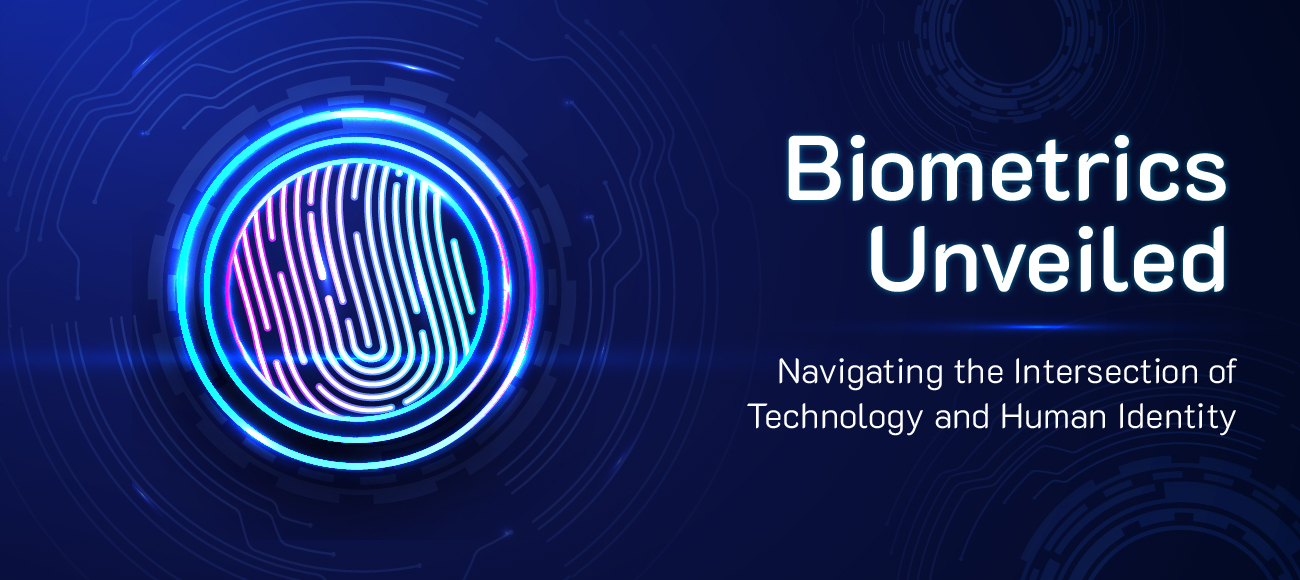
08 Feb Unlocking The Intriguing World of Biometrics
In a world that constantly seeks innovation and efficiency, biometrics stands at the forefront, revolutionizing the way we interact with technology and access our personal spaces. This cutting-edge field blends technology with biology, bringing forth a realm of possibilities that were once confined to the realms of science fiction. From unlocking your smartphone with a fingerprint to securing sensitive data with facial recognition, biometrics is weaving itself seamlessly into the fabric of our daily lives.
Understanding Biometrics: A Dive into the Basics
Biometrics, at its core, involves the identification or verification of individuals based on unique physical or behavioral traits. These traits could be anything from fingerprints, iris patterns, facial features, voice, or even the way you type on a keyboard. Unlike traditional methods such as passwords or PINs, biometric data is inherently tied to the individual, making it a more secure and convenient means of authentication.
Fingerprints: Nature’s Unique Code
Let’s start with one of the oldest and most widely used forms of biometrics – fingerprints. Each fingerprint is a unique pattern of ridges and valleys formed during fetal development. The intricate details of these ridges create a distinctive identifier for each individual, making it an ideal candidate for personal identification. Fingerprint recognition technology has found its way into everyday devices like smartphones and laptops, enhancing security and ease of use.
Eyes as the Gateway: Iris and Retina Scans
The eyes, often referred to as the windows to the soul, also serve as gateways in the realm of biometrics. Iris and retina scans are two powerful methods that rely on the unique patterns within the eye. The iris, with its colorful and intricate patterns, is as unique as a fingerprint. Retina scans, on the other hand, focus on the blood vessel patterns at the back of the eye. These technologies are employed in high-security environments, ensuring that only authorized individuals gain access.
Facial Recognition: Where Technology Meets Expression
Perhaps one of the most fascinating aspects of biometrics is facial recognition. The human face holds a myriad of features – the distance between the eyes, the shape of the nose, and the contour of the jawline. Advanced algorithms analyze these features to create a unique facial signature. From unlocking smartphones to enhancing airport security, facial recognition is becoming increasingly prevalent, ushering in a new era of convenience and safety.
Voice Biometrics: The Sound of Identity
Your voice, with its pitch, tone, and unique patterns, serves as an excellent biometric identifier. Voice biometrics systems capture and analyze the characteristics of your speech, creating a vocal signature that is distinctive to each individual. This technology finds applications in secure phone banking, voice-activated devices, and even criminal investigations.
Behavioral Biometrics: Typing and Walking Styles
Beyond physical traits, biometrics extends its reach into our behavior. The way we type on a keyboard or walk can be as distinctive as our fingerprints. Behavioral biometrics focuses on the patterns and rhythms in our actions, creating a unique profile for identification purposes. This adds an extra layer of security, as it considers not only what we are but also how we interact with the world around us.
Challenges and Ethical Considerations
While the promises of biometrics are vast, they come with their fair share of challenges. Privacy concerns and the potential for misuse raise ethical questions that must be carefully navigated. Ensuring the secure storage of biometric data and safeguarding against unauthorized access are critical aspects that demand constant attention.
The Future Landscape of Biometrics
As technology continues to evolve, so does the landscape of biometrics. Emerging technologies like DNA-based identification and gesture recognition hint at a future where our very genetic code becomes a key to unlocking secure spaces. As we embrace these advancements, the need for robust cybersecurity measures and ethical guidelines becomes more pronounced than ever.
In conclusion, the world of biometrics is a fascinating journey into the marriage of technology and human biology. As we witness its integration into our daily lives, we are reminded of the ever-accelerating pace of innovation. From unlocking our smartphones to securing our most sensitive information, biometrics is shaping the future of identification and authentication, promising a world where access is not only secure but uniquely tailored to each individual.

Sorry, the comment form is closed at this time.